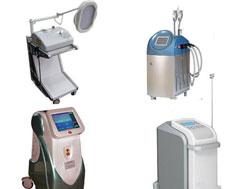EU medical device legislation will be revised significantly
 On September 26, the European Commission adopted a package that included two legislative recommendations and a briefing. The program covers medical instruments, including in vitro diagnostics and active implantable medical devices. The proposal for new cases is intended to replace the current EU medical device legislation, Council Directive 90/385/EEC for Actively Implantable Medical Devices, and Council 93/ for other types of medical devices. 42/EEC instructions. The above legislation regulates medical devices to be placed on the EU market.
On September 26, the European Commission adopted a package that included two legislative recommendations and a briefing. The program covers medical instruments, including in vitro diagnostics and active implantable medical devices. The proposal for new cases is intended to replace the current EU medical device legislation, Council Directive 90/385/EEC for Actively Implantable Medical Devices, and Council 93/ for other types of medical devices. 42/EEC instructions. The above legislation regulates medical devices to be placed on the EU market. The new case involves several categories of Chinese medical instruments exported to the European Union, such as heart rate monitors, blood pressure monitors and thermometers, and other electronic devices, as well as tapes and plastic syringes.
In addition, the proposed scheme plans to develop a new regulation covering only in vitro diagnostic medical devices to expand the scope of existing legislation. Products classified in this category include instruments used to ensure the safety of blood transfusions, as well as instruments used for blood chemistry analysis.
For example, if the new one is passed, there will be a major change in the current legal framework. The medical device legislation will be implemented directly in all EU member states without having to be transposed into national legislation.
The proposed scheme aims to overcome the deficiencies of the existing legislation, substantially tighten the EU's medical device regulations, and provide more detailed supervision and enforcement provisions for the conformity assessment agencies and the authorities of the EU member states.
Market supervision measures include: increasing the number of surprise inspections by qualified assessment agencies and EU member states; setting up an EU website, producers or importers reporting serious incidents and corrective actions to the website; establishing a single registration database (Eudamed) to ensure supply chain All links are traceable.
The bill on medical devices adds new elements to the current legislation. The main points include: First, the patient must be provided with the necessary information about implantable medical devices. This means that manufacturers and importers have the responsibility to provide such information. Examples of such devices are implantable pacemakers, catheters, and implantable active monitors. Second, the source and direction of medical devices will be more easily traced back. The statutory plan can ensure that medical device users can trace where and where the device is supplied when necessary. The third is the implementation of the “Specific Device Identification†regulation, in which manufacturers, representatives, or importers must register with the Central European Data Bank itself and their medical device data, and must disclose the instrument safety and performance data. Fifth, the new legislation emphasizes the importance of clinical assessment. It is the manufacturer’s responsibility to ensure that the product has undergone a clinical evaluation before it is released to the market and that the results of the assessment must be made publicly available. Sixth, another new element introduced by the future legislation is the "qualified person". The manufacturer must appoint a qualified person to ensure that the product complies with the law. The person must have professional knowledge of medical instruments to ensure that each batch of products has been evaluated before being introduced into the market, and that technical documents and conformity declaration documents are properly preserved.
The bill also suggests that in the absence of harmonized standards, common technical specifications should be introduced. Under the current legislation, only common technical specifications for in vitro diagnostic medical instruments are targeted. Therefore, the introduction of common technical specifications will be a new measure for manufacturers outside the scope of in vitro diagnostic medical instruments.
Compared with the existing legislation, the proposed regulatory requirements for medical devices are broader. The new case will cover several categories of products that are not regulated by current legislation, such as products made with nanomaterials ranging from 1 to 100 nanometers, which can significantly change the characteristics of the instrument and are themselves replacement parts for the instrument.
The proposed scheme must be submitted to the European Parliament and the European Council for deliberation. The council and the council may propose amendments to the bill. It may take a year or two before a consensus can be reached. After the bill is passed, it will be published in the "Official Gazette" and will come into effect three years later. Therefore, there will be some time for manufacturers to make adjustments to the new regulations.
Pull Handles,Swing Handles,Surface Mount Handles,Stainless Steel Pull Handles
Ningbo Hengchieh Locking Technology Co., Ltd. , https://www.hengchieh.com